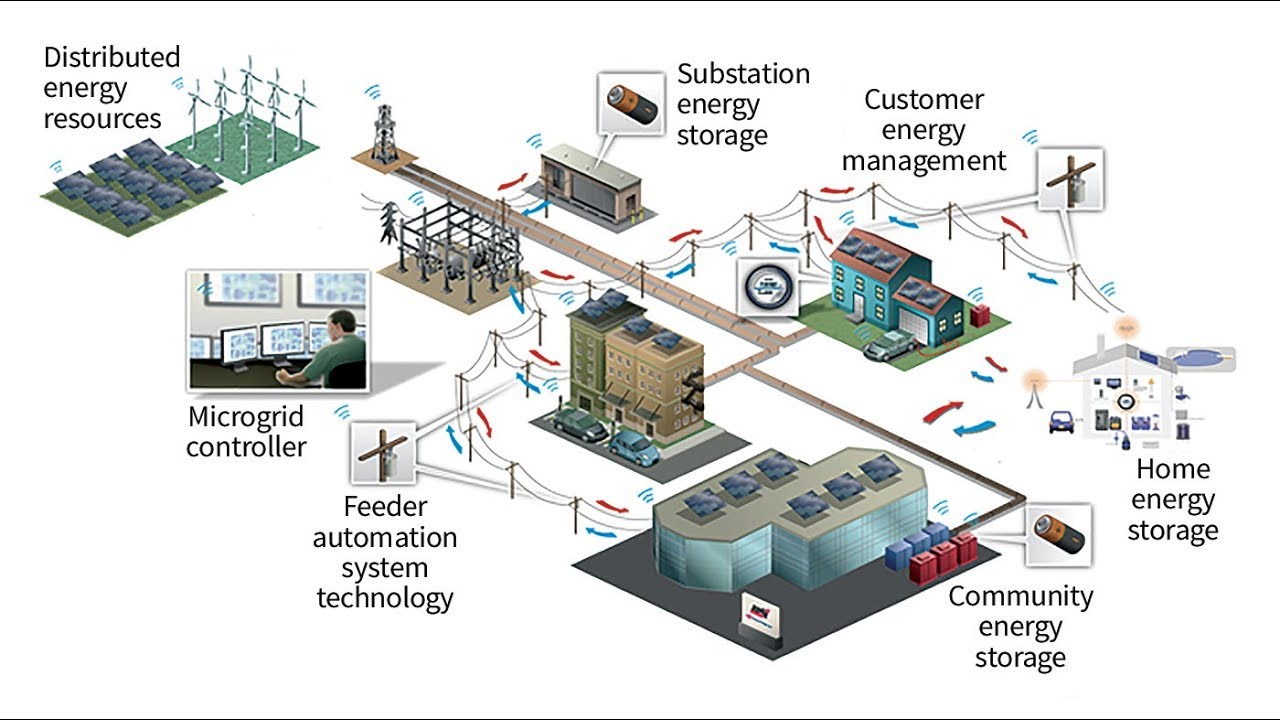Market Overview: The Distribution Feeder Automation Market refers to the market for advanced technologies and systems that automate the monitoring, control, and management of distribution feeders within an electrical distribution network. Distribution feeder automation improves the efficiency, reliability, and resiliency of power distribution by utilizing sensors, communication networks, and automation software to monitor and control power flows, fault detection, and restoration. These solutions enhance the performance of distribution feeders and enable utilities to deliver electricity more effectively.
Feeder Automation Market is projected to be worth USD 7.85 Billion by 2030, registering a CAGR of 8.2% during the forecast period (2022 – 2030)
Demand: The demand for distribution feeder automation is driven by several factors, including:
- Grid Reliability and Resiliency: Distribution feeder automation solutions help utilities improve the reliability and resiliency of their distribution networks. By automating fault detection, isolation, and restoration, these systems minimize outage durations and enhance the overall performance of the grid, ensuring a more reliable power supply for customers.
- Operational Efficiency: Distribution feeder automation systems streamline operations by reducing manual interventions, optimizing power flow, and enhancing network monitoring capabilities. These solutions enable utilities to manage distribution feeders more efficiently, reduce costs, and improve the overall operational performance of their networks.
- Integration of Renewable Energy: The increasing integration of renewable energy sources, such as solar and wind power, into the distribution grid presents operational challenges. Distribution feeder automation helps utilities manage the intermittent nature of renewables, optimize power flow, and ensure grid stability, facilitating the integration of clean energy sources.
Scope: The scope of the distribution feeder automation market covers various aspects and applications, including:
- Fault Detection and Restoration: Distribution feeder automation systems provide real-time monitoring and fault detection capabilities. They can quickly identify and isolate faults, minimizing downtime and improving the overall reliability of distribution feeders.
- Load Balancing and Optimization: These systems optimize power flow and load balancing across distribution feeders, ensuring efficient energy distribution and minimizing network congestion. They help utilities manage peak demand, reduce losses, and improve network efficiency.
- Asset Monitoring and Maintenance: Distribution feeder automation solutions offer remote monitoring capabilities for distribution network assets. They enable utilities to gather real-time data on equipment performance, conduct predictive maintenance, and extend the lifespan of network assets.
Trends:
- Advanced Communication Networks: The integration of advanced communication networks, such as fiber-optic and wireless networks, is a key trend in distribution feeder automation. These networks provide fast and reliable data transmission, enabling real-time monitoring, control, and coordination of distribution feeders.
- Data Analytics and Predictive Maintenance: The use of data analytics and predictive maintenance algorithms is gaining prominence in distribution feeder automation. These technologies enable utilities to analyze large amounts of data, detect patterns, and predict equipment failures, facilitating proactive maintenance and reducing downtime.
- Integration with Smart Grid and IoT: Distribution feeder automation systems are being integrated with smart grid technologies and Internet of Things (IoT) devices. This integration enhances interoperability, data exchange, and control capabilities, enabling more advanced automation and optimization of distribution feeders.
Global Opportunities: The distribution feeder automation market presents several global opportunities, including:
- Grid Modernization Initiatives: Governments and utilities worldwide are investing in grid modernization projects to improve the efficiency and reliability of their power distribution networks. Distribution feeder automation is a critical component of these initiatives, offering opportunities for technology vendors and solution providers.
- Emerging Markets and Energy Access: Emerging markets with expanding electricity infrastructure and increasing energy demand present significant opportunities for distribution feeder automation. These regions can leapfrog traditional grid infrastructure and directly adopt advanced automation technologies, enhancing energy access and improving grid performance.
Challenges: The distribution feeder automation market also faces certain challenges, including:
- Technical Integration: Integrating distribution feeder automation systems with existing infrastructure and legacy systems can be challenging. Ensuring compatibility, interoperability, and seamless integration is essential for effective deployment and operation.
- Data Security and Privacy: Distribution feeder automation systems generate and process sensitive data about power flows and grid operations. Ensuring robust cybersecurity measures and protecting data privacy are critical challenges that need to be addressed to maintain grid security and customer trust.
- Cost Considerations: The deployment of distribution feeder automation systems involves upfront costs, including equipment, communication networks, and software. Utilities need to assess the costs and benefits of implementation, considering factors such as the scale of deployment, operational savings, and return on investment.
Overall, the distribution feeder automation market offers significant opportunities driven by grid reliability needs, operational efficiency goals, and the integration of renewable energy sources. Overcoming challenges related to technical integration, data security, and cost considerations will be crucial for widespread adoption and successful implementation of distribution feeder automation solutions.
By visiting our website or contacting us directly, you can explore the availability of specific reports related to this market. These reports often require a purchase or subscription, but we provide comprehensive and in-depth information that can be valuable for businesses, investors, and individuals interested in this market.
“Remember to look for recent reports to ensure you have the most current and relevant information.”
Click Here, To Get Free Sample Report: https://stringentdatalytics.com/sample-request/distribution-automation-solutions-market/10965/
Market Segmentations:
Global Distribution Feeder Automation Market: By Company
- ABB
- Eaton
- Grid Solutions
- Schneider Electric
- Siemens
- Advanced Control Systems
- Atlantic City Electric
- CG
- G&W Electric
- Kalkitech
- Kyland Technology
- Moxa
- S&C Electric Company
- Schweitzer Engineering Laboratories (SEL)
Global Distribution Feeder Automation Market: By Type
- Fault Location
- Isolation
- Service Restoration
- Automatic Transfer Scheme
Global Distribution Feeder Automation Market: By Application
- Industrial
- Commercial
- Residential
Global Distribution Feeder Automation Market: Regional Analysis
The regional analysis of the global Distribution Feeder Automation market provides insights into the market’s performance across different regions of the world. The analysis is based on recent and future trends and includes market forecast for the prediction period. The countries covered in the regional analysis of the Distribution Feeder Automation market report are as follows:
North America: The North America region includes the U.S., Canada, and Mexico. The U.S. is the largest market for Distribution Feeder Automation in this region, followed by Canada and Mexico. The market growth in this region is primarily driven by the presence of key market players and the increasing demand for the product.
Europe: The Europe region includes Germany, France, U.K., Russia, Italy, Spain, Turkey, Netherlands, Switzerland, Belgium, and Rest of Europe. Germany is the largest market for Distribution Feeder Automation in this region, followed by the U.K. and France. The market growth in this region is driven by the increasing demand for the product in the automotive and aerospace sectors.
Asia-Pacific: The Asia-Pacific region includes Singapore, Malaysia, Australia, Thailand, Indonesia, Philippines, China, Japan, India, South Korea, and Rest of Asia-Pacific. China is the largest market for Distribution Feeder Automation in this region, followed by Japan and India. The market growth in this region is driven by the increasing adoption of the product in various end-use industries, such as automotive, aerospace, and construction.
Middle East and Africa: The Middle East and Africa region includes Saudi Arabia, U.A.E, South Africa, Egypt, Israel, and Rest of Middle East and Africa. The market growth in this region is driven by the increasing demand for the product in the aerospace and defense sectors.
South America: The South America region includes Argentina, Brazil, and Rest of South America. Brazil is the largest market for Distribution Feeder Automation in this region, followed by Argentina. The market growth in this region is primarily driven by the increasing demand for the product in the automotive sector.
Visit Report Page for More Details: https://stringentdatalytics.com/reports/distribution-feeder-automation-market/10966/
Reasons to Purchase Distribution Feeder Automation Market Report:
- Comprehensive Market Insights: Global research market reports provide a thorough and in-depth analysis of a specific market or industry. They offer valuable insights into market size, growth potential, trends, challenges, and opportunities, helping businesses make informed decisions and formulate effective strategies.
- Market Analysis and Forecasts: These reports provide detailed analysis and forecasts of market trends, growth rates, and future market scenarios. They help businesses understand the current market landscape and anticipate future market developments, enabling them to plan and allocate resources accordingly.
- Competitive Intelligence: Global research market reports provide a competitive landscape analysis, including information about key market players, their market share, strategies, and product portfolios. This information helps businesses understand their competitors’ strengths and weaknesses, identify market gaps, and develop strategies to gain a competitive advantage.
- Industry Trends and Insights: These reports offer insights into industry-specific trends, emerging technologies, and regulatory frameworks. Understanding industry dynamics and staying updated on the latest trends can help businesses identify growth opportunities and stay ahead in a competitive market.
- Investment and Expansion Opportunities: Global research market reports provide information about investment opportunities, potential markets for expansion, and emerging growth areas. These reports help businesses identify untapped markets, assess the feasibility of investments, and make informed decisions regarding expansion strategies.
- Risk Mitigation: Market reports provide risk assessment and mitigation strategies. By analyzing market dynamics, potential challenges, and regulatory frameworks, businesses can proactively identify risks and develop strategies to mitigate them, ensuring better risk management and decision-making.
- Cost and Time Efficiency: Conducting comprehensive market research independently can be time-consuming and expensive. Purchasing a global research market report provides a cost-effective and time-efficient solution, saving businesses valuable resources while still gaining access to reliable and detailed market information.
- Decision-Making Support: Global research market reports serve as decision-making tools by providing data-driven insights and analysis. Businesses can rely on these reports to support their decision-making process, validate assumptions, and evaluate the potential outcomes of different strategies.
In general, market research studies offer companies and organisations useful data that can aid in making decisions and maintaining competitiveness in their industry. They can offer a strong basis for decision-making, strategy formulation, and company planning.
About US:
Stringent Datalytics offers both custom and syndicated market research reports. Custom market research reports are tailored to a specific client’s needs and requirements. These reports provide unique insights into a particular industry or market segment and can help businesses make informed decisions about their strategies and operations.
Syndicated market research reports, on the other hand, are pre-existing reports that are available for purchase by multiple clients. These reports are often produced on a regular basis, such as annually or quarterly, and cover a broad range of industries and market segments. Syndicated reports provide clients with insights into industry trends, market sizes, and competitive landscapes. By offering both custom and syndicated reports, Stringent Datalytics can provide clients with a range of market research solutions that can be customized to their specific needs
Contact US:
Stringent Datalytics
Contact No – +1 346 666 6655
Email Id – sales@stringentdatalytics.com




Leave a Reply